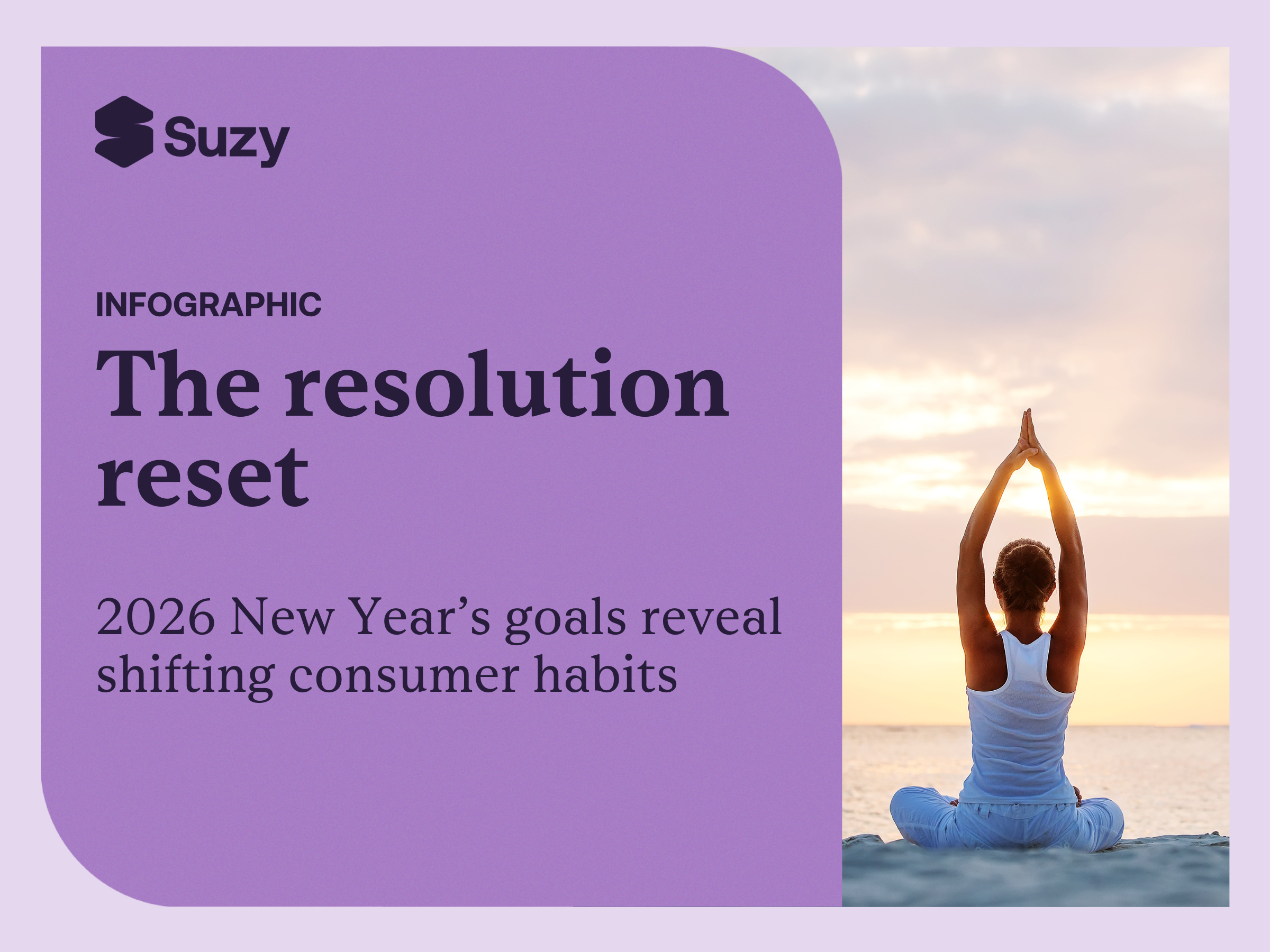Great products require great marketing campaigns, backed by strategic market research. At Suzy, we understand that the development of successful campaigns is deeply intertwined with the methods used to develop your products, ensuring strategic alignment from concept to execution.
We champion a methodical approach to ad testing that seamlessly integrates both qualitative and quantitative research. Whether your campaigns are focused on digital, print, TV, radio, web, or mobile, Suzy enables you to iteratively test and refine your ads by tapping into rich consumer feedback. This ensures that your marketing efforts resonate well with consumers, meet their needs, and effectively drive their purchasing decisions.
Today, let’s explore how Suzy’s agile research approach can empower your campaign development, enabling you to craft marketing strategies that are not only creative but also thoroughly informed and consumer-focused.
Why is ad testing crucial to campaign development success?
The true test of a product's market readiness hinges on meticulously crafted marketing messages, validated through rigorous ad testing. Here’s why this process is central to the success of your campaigns:
- Precision Targeting: Ad testing fine-tunes your campaigns, ensuring they speak directly to the heart of your audience’s needs and preferences. This targeted approach ensures that the final campaign not only reaches but truly engages your intended demographic, maximizing impact and recall.
- Risk Mitigation: Launching campaigns without prior testing is a gamble we help you avoid. Ad testing serves as a critical checkpoint, identifying potential pitfalls and opportunities, thereby safeguarding your investment and optimizing campaign effectiveness before a full-scale launch.
- Deep Consumer Insights: Integrating both qualitative and quantitative research delivers nuanced insights into consumer behaviors and preferences. At Suzy, you can flip back and forth between qualitative techniques to uncover the emotions and thoughts behind consumer reactions and quantitative tools to validate these findings across broader segments, ensuring your strategies are robust and data-driven.
- Optimized Spend: With marketing budgets continually under scrutiny, ensuring every dollar counts is paramount. Ad testing empowers you to allocate your budget towards the most promising strategies, proven through data to deliver the best ROI.
- Enhanced Consumer Engagement: By involving consumers in the ad testing phase, you forge a connection that can lead to higher engagement rates once the campaign launches. This early interaction not only builds anticipation but also fosters loyalty, turning your target audience into brand advocates.
- Agile Marketing: The market waits for no one, and agility is key to keeping pace. Suzy’s approach to ad testing supports an agile marketing strategy, allowing for real-time adjustments based on continuous consumer feedback. This flexibility ensures that your marketing remains relevant and powerful, adapting swiftly to emerging trends and consumer insights.
By embracing a comprehensive approach to ad testing, you can ensure that every campaign you launch is not only creatively compelling but also grounded in solid, actionable data. It’s how we help you move confidently in your marketing decisions, knowing every step is backed by evidence and consumer insight.
How to use on-demand ad testing to create great campaigns
Like everything in this process, creating campaigns starts with an idea—or with several ideas. Using your understanding of your target market, marketing teams can build a marketing strategy and develop ad creative to ad test with consumers. Take that consumer consideration and feedback and continue to test ad iterations. This is where you can fine-tune the campaign messaging and branding and begin to understand its potential.
“It [gives] us some insights into how we might target different consumers with messaging that’s more relevant to them, or if there are certain promotions or activations that are more relevant for an in-store consumer than for a digital consumer,” says Ally Sigmon, Consumer Insights Manager at Chipotle.
Test your copy to see what your consumers are taking away from your messaging and why it matters to them. Run brand recall and relevance diagnostics.
Keep iterating until you’ve outperformed benchmarks. In other words, when new campaign assets perform better with consumers than existing campaign assets, or better than your competitors.
Campaign development in action
In the first two blogs in this series, we walked through how one of our clients in the pet food industry used the foundational learning and innovation pipeline frameworks to develop new product ideas and test those new concepts with consumers.
That same client then used on-demand ad testing to determine the best ways to market their new product. The brand tapped into survey panels to test different campaign elements in real-time, such as copy, calls to action, taglines, fonts, colors, and more.
Using consumer feedback from their target consumers, the pet food brand was able to make iterative, data-driven decisions about which campaign assets would most effectively drive demand, brand awareness, and purchase intent.
Accessing the same on-demand consumer sets for both idea generation and campaign testing gave them continuity across the entire process. That continuity allowed them to go to market with the confidence that their target consumers were both interested in their product and receptive to their marketing campaign.
The Suzy Difference
Ad testing is traditionally a costly and slow endeavor—but it doesn’t have to be. To compete in modern markets, your organization has to take on a truly multi-dimensional approach. As our former Senior VP of Market Research, William Cimarosa once said, “If you don’t start to rethink the tools you have in your toolkit, you risk getting left behind.”
Suzy embodies this forward-thinking by offering a consolidated platform that delivers quant, qual, high-quality audiences, and comprehensive data exploration and analysis—all seamlessly integrated.
By centralizing your market research tools, Suzy not only streamlines your processes but also enhances efficiency, allowing your campaigns to leverage actionable, high-quality data. This strategic centralization elevates your brand by ensuring that marketing efforts are not only effective but also cost-efficient. Our platform integrates your audience directly, enabling on-demand access to the same survey groups from the initial stages of foundational learning to the detailed phases of campaign development.
This approach not only saves time and resources but also ensures that every stage of your campaign is informed by consistent, reliable consumer insights, driving better marketing decisions and outcomes.
See how it works today! Book a demo with our team to see how ad testing works on Suzy’s consumer research platform.
.webp)





.png)

